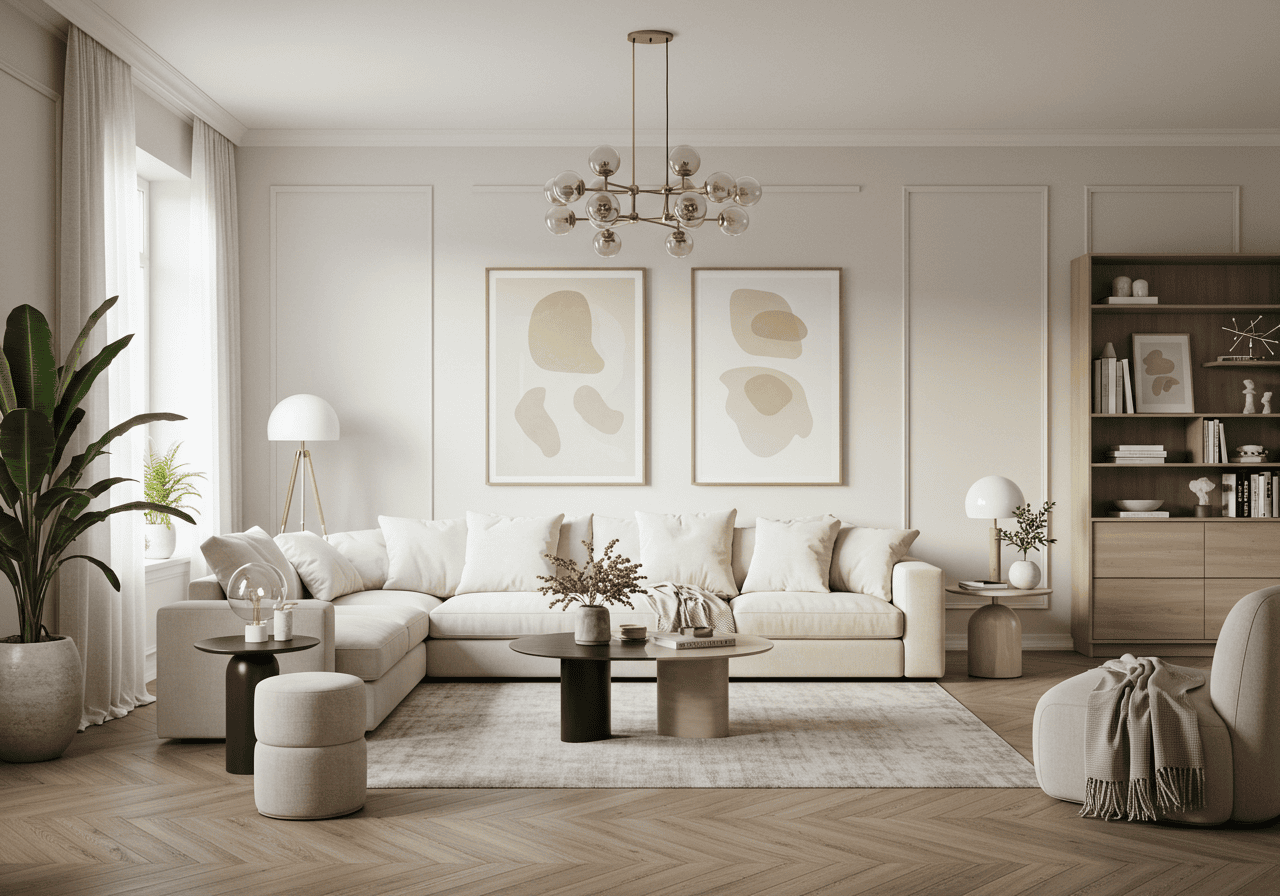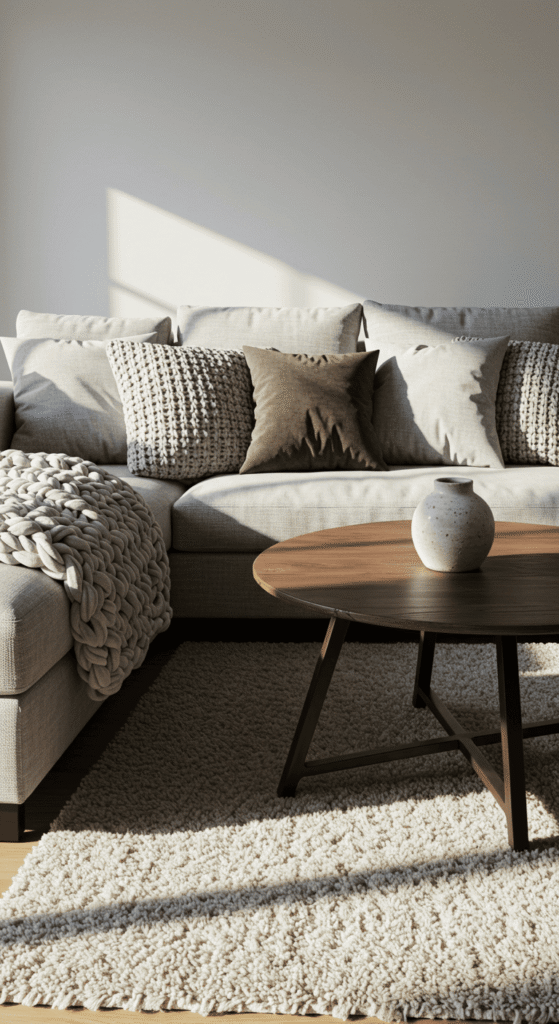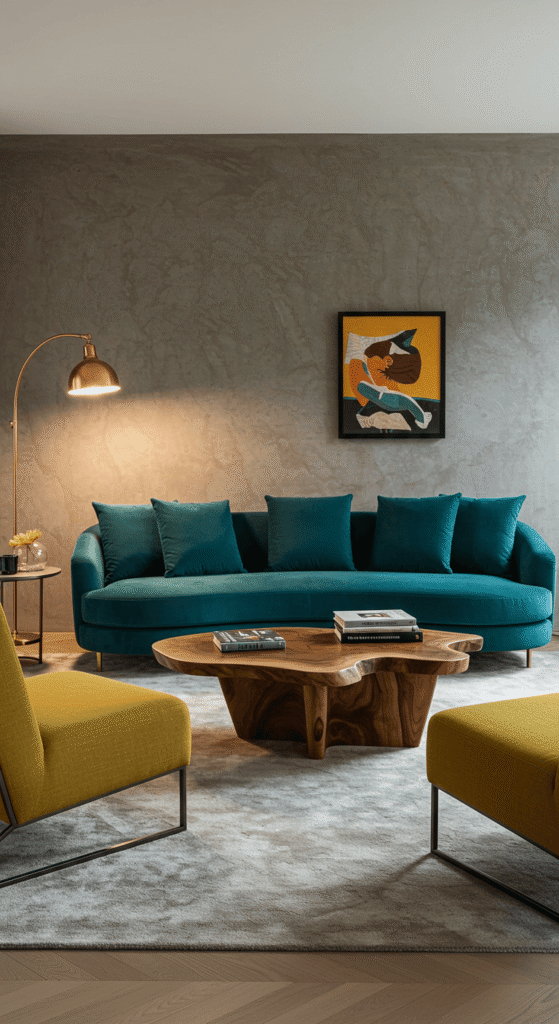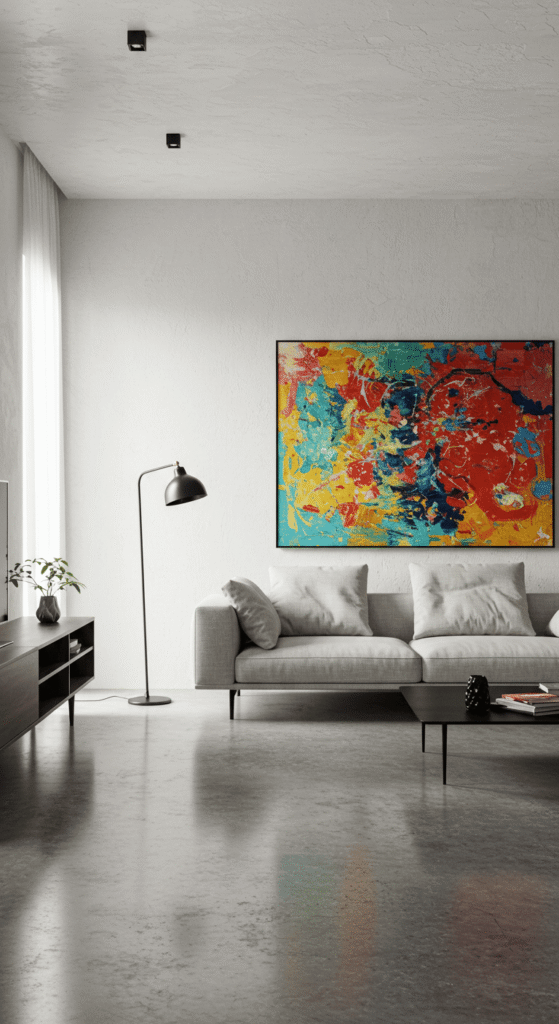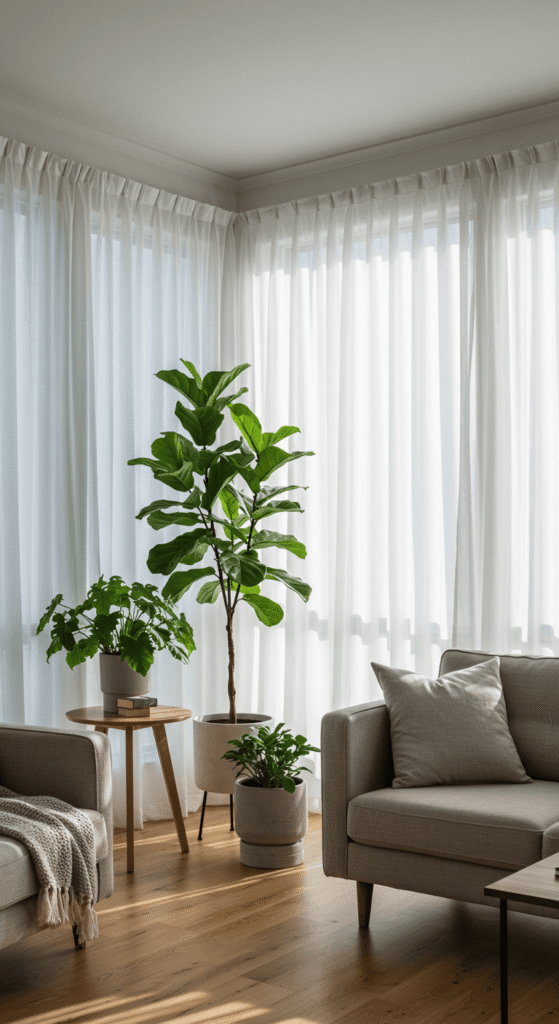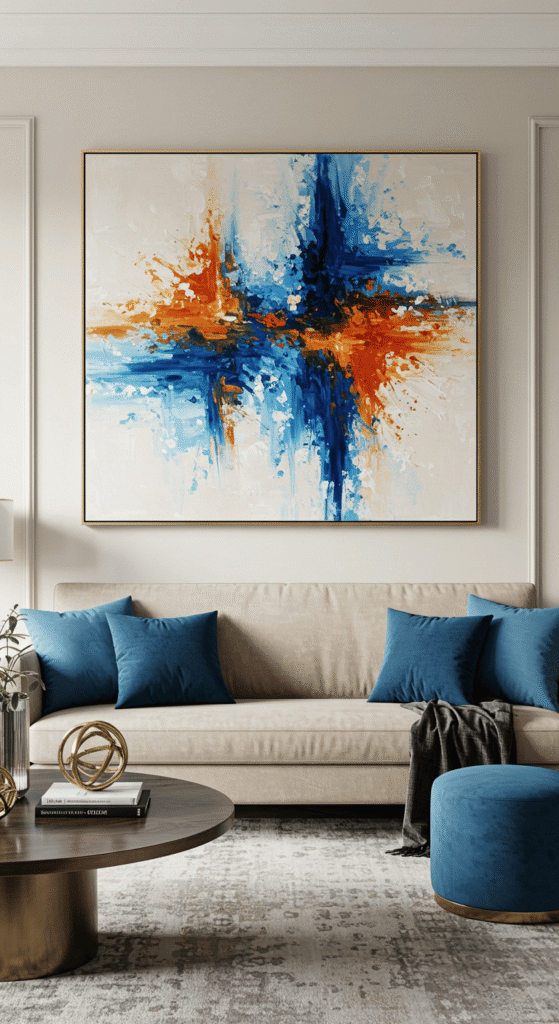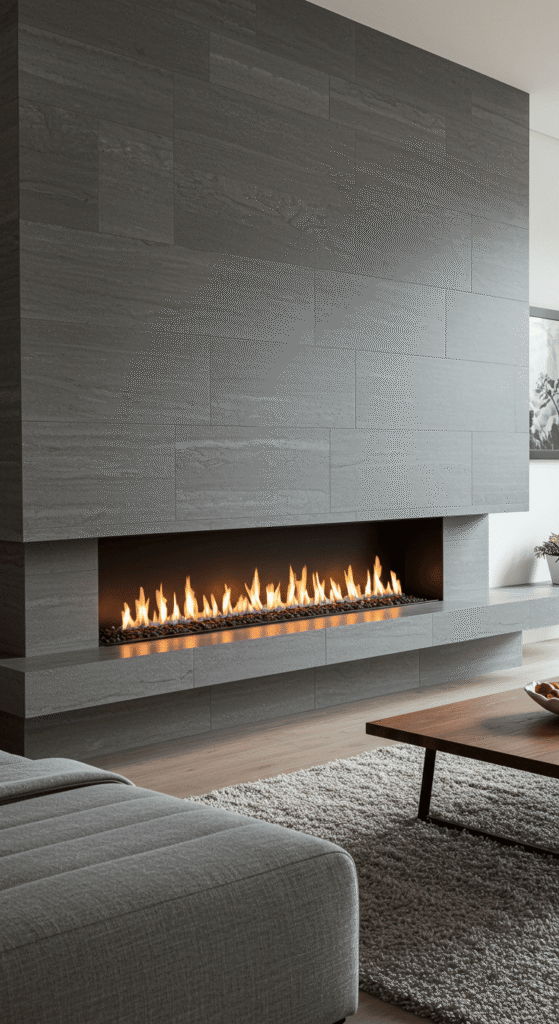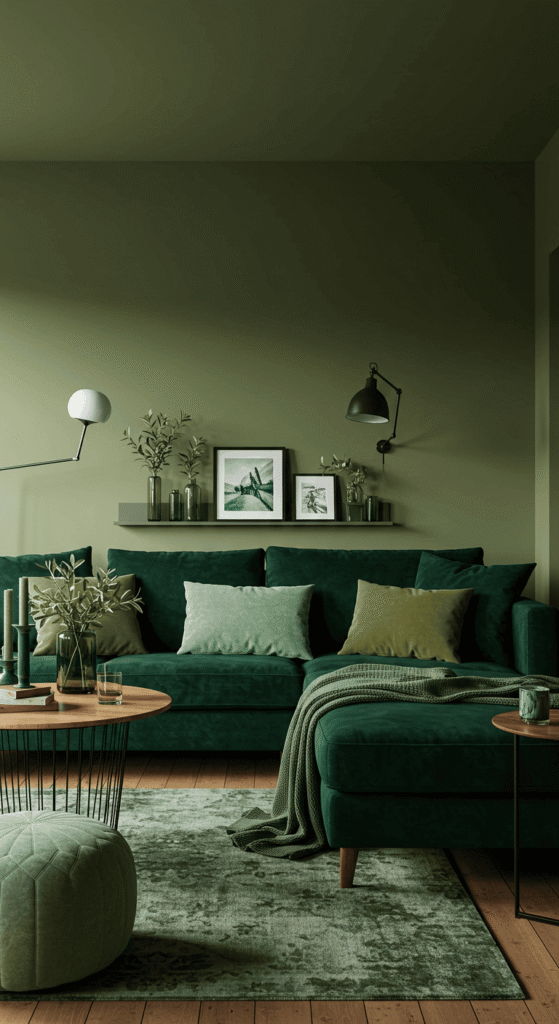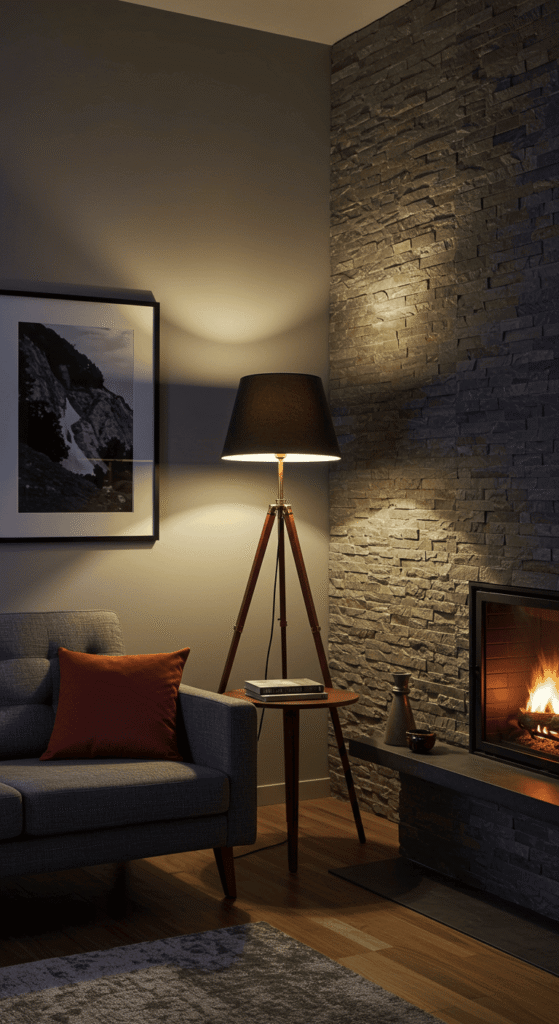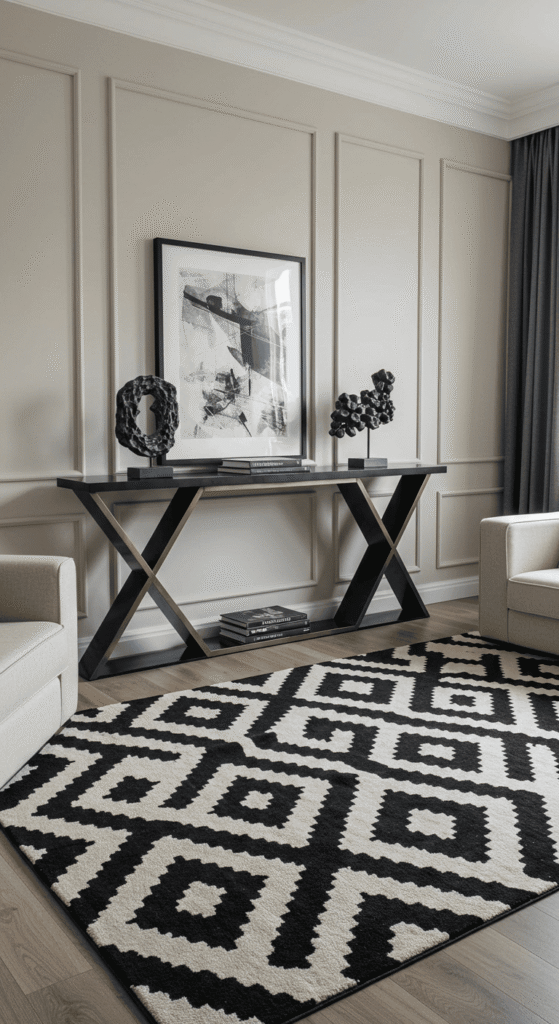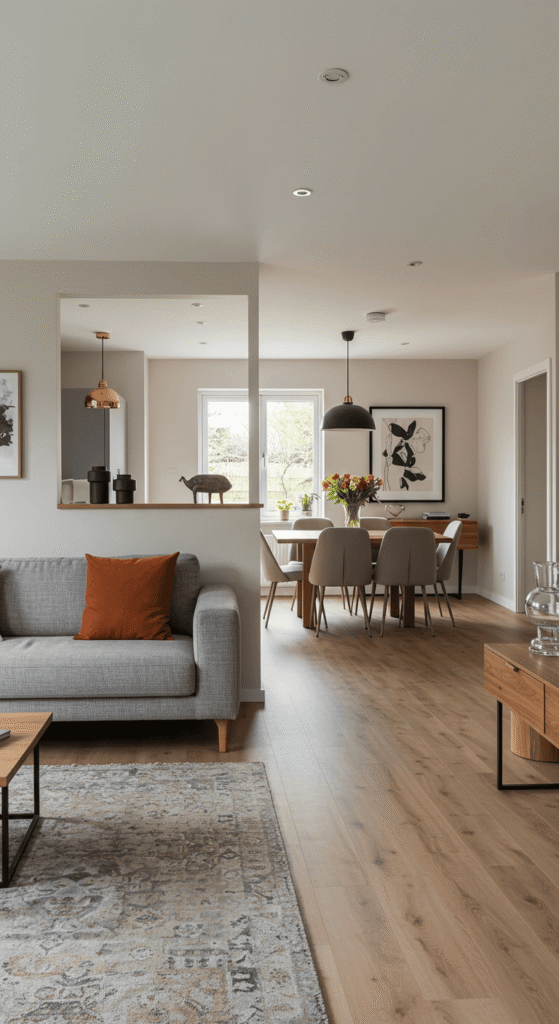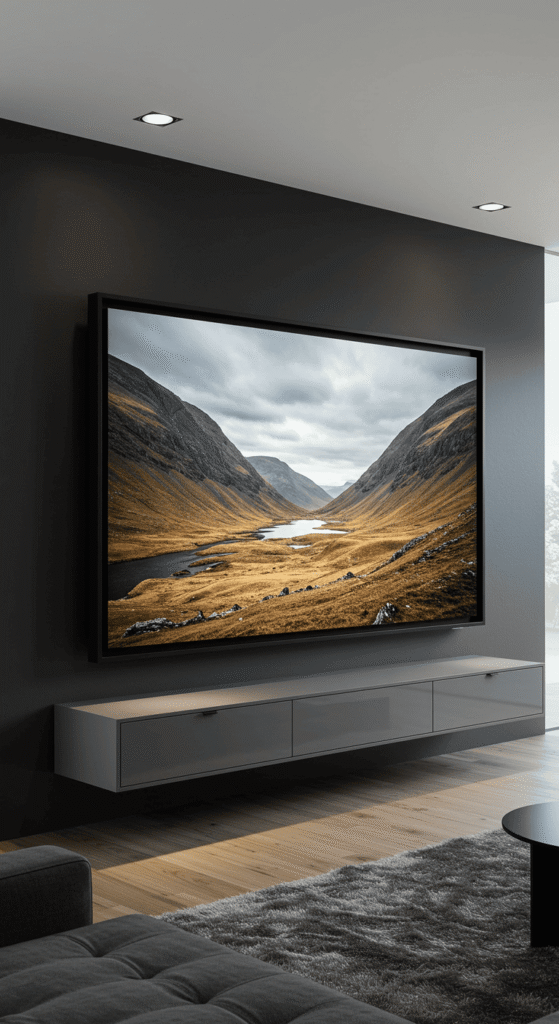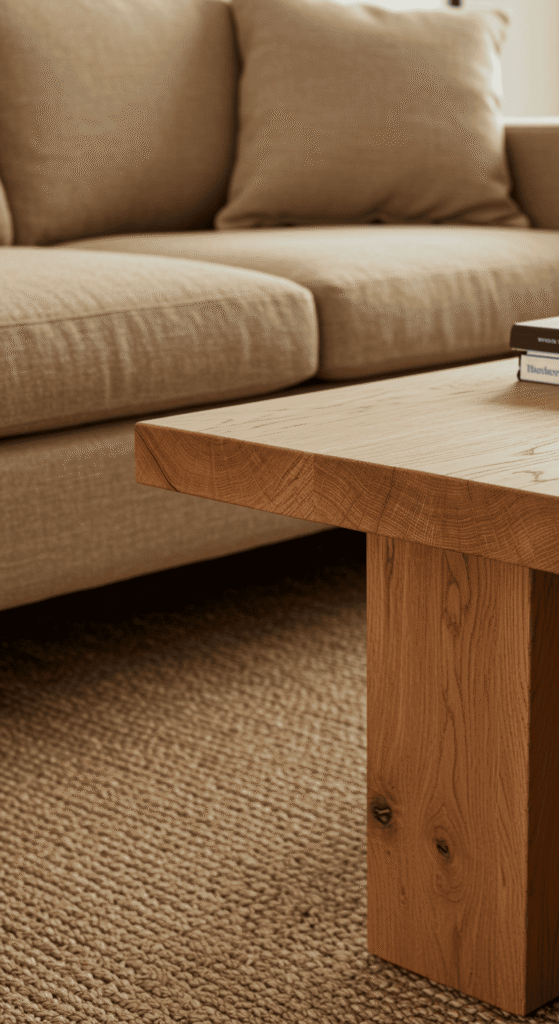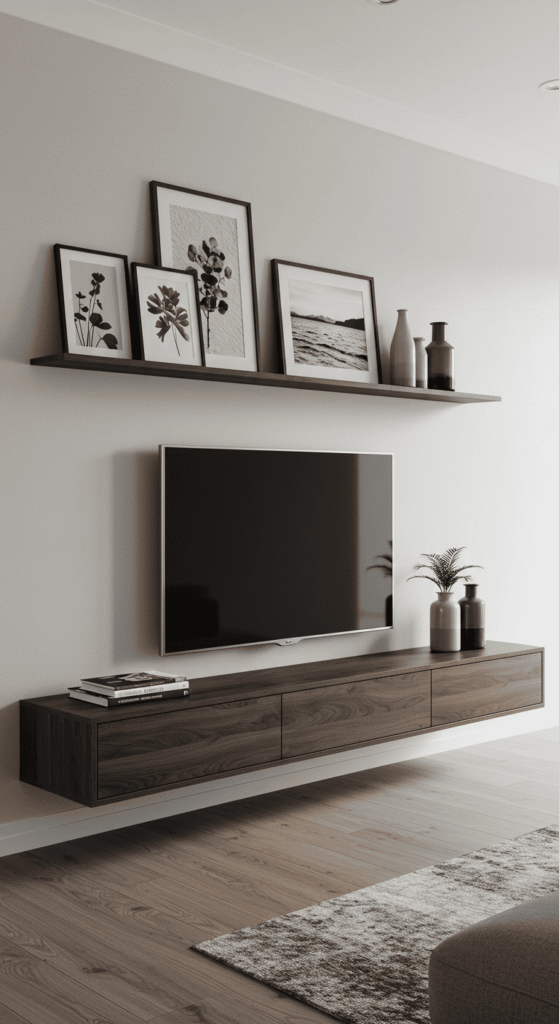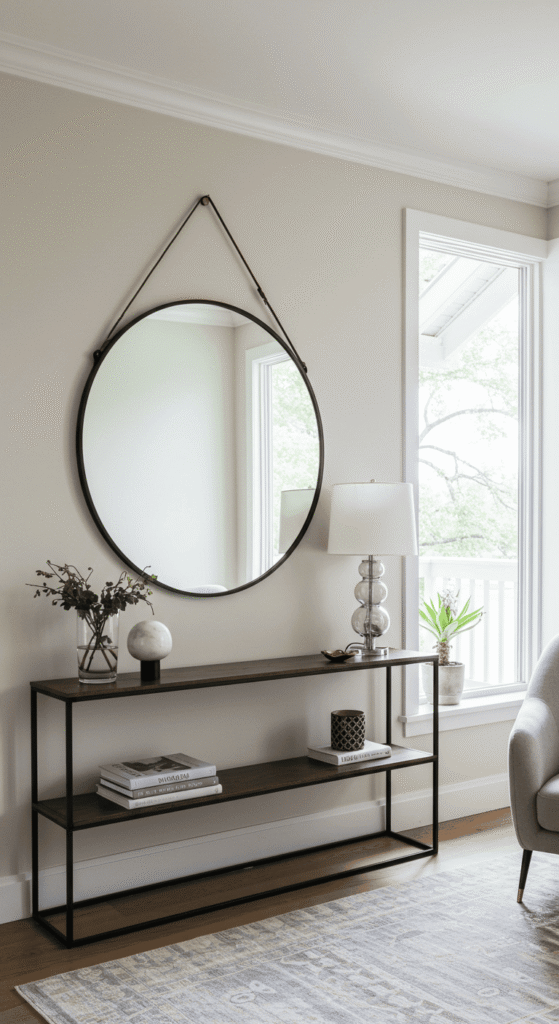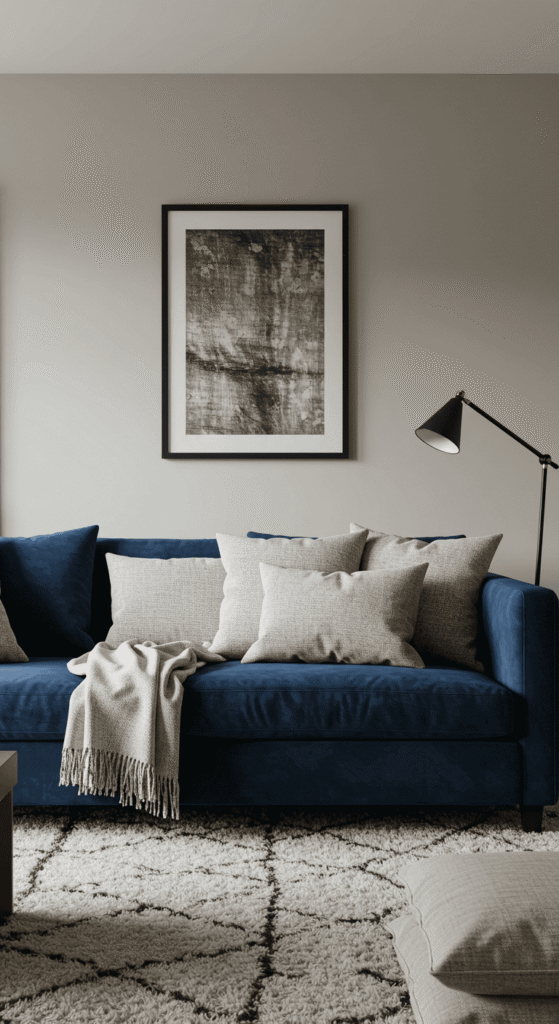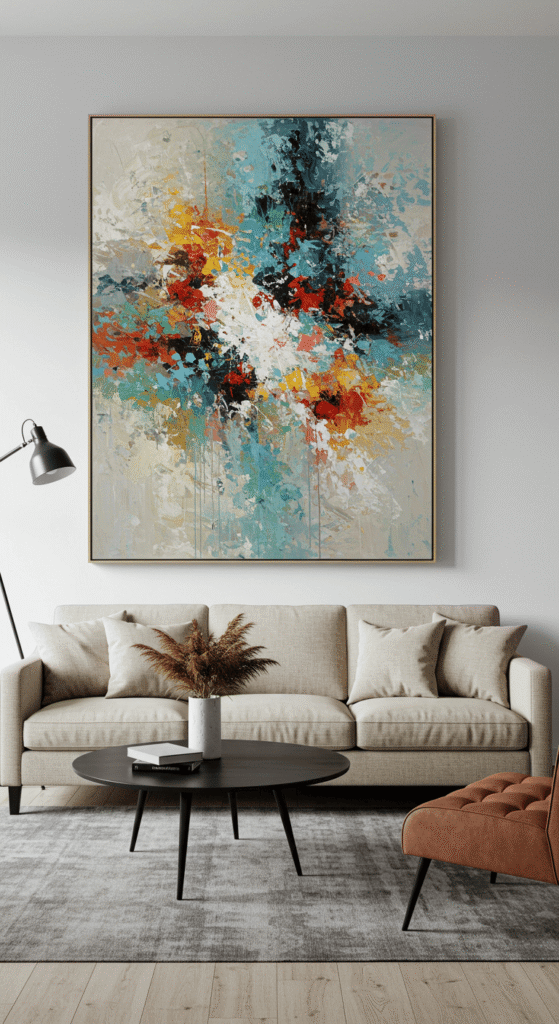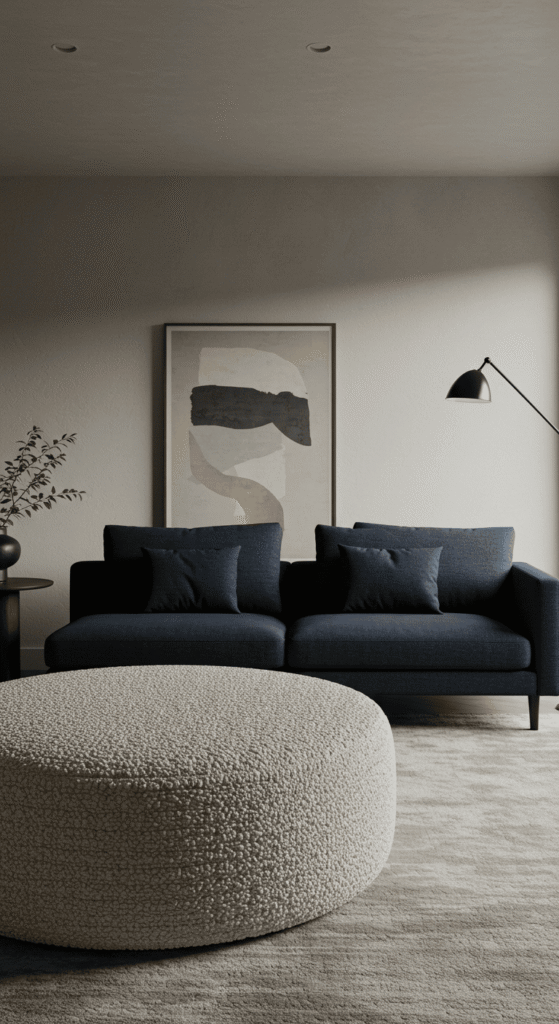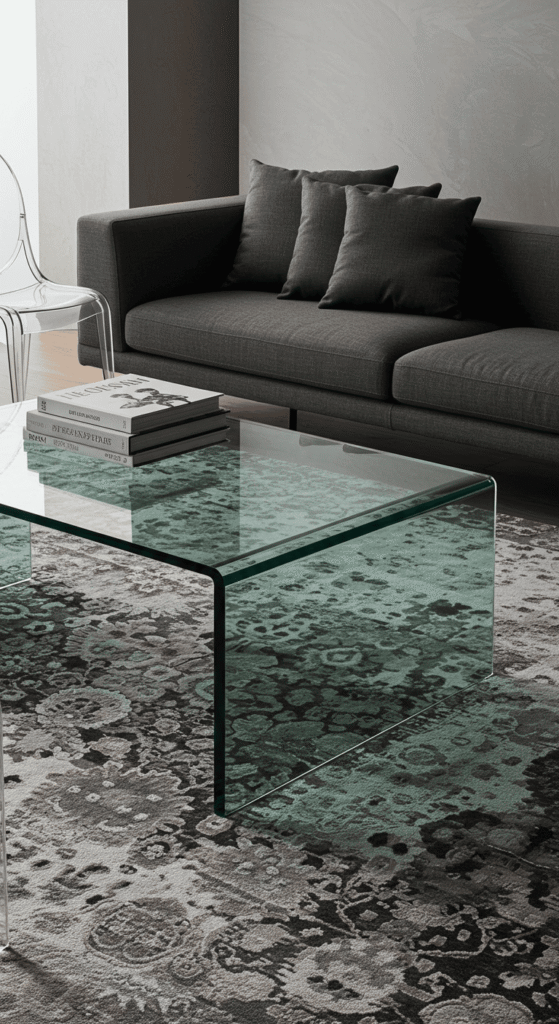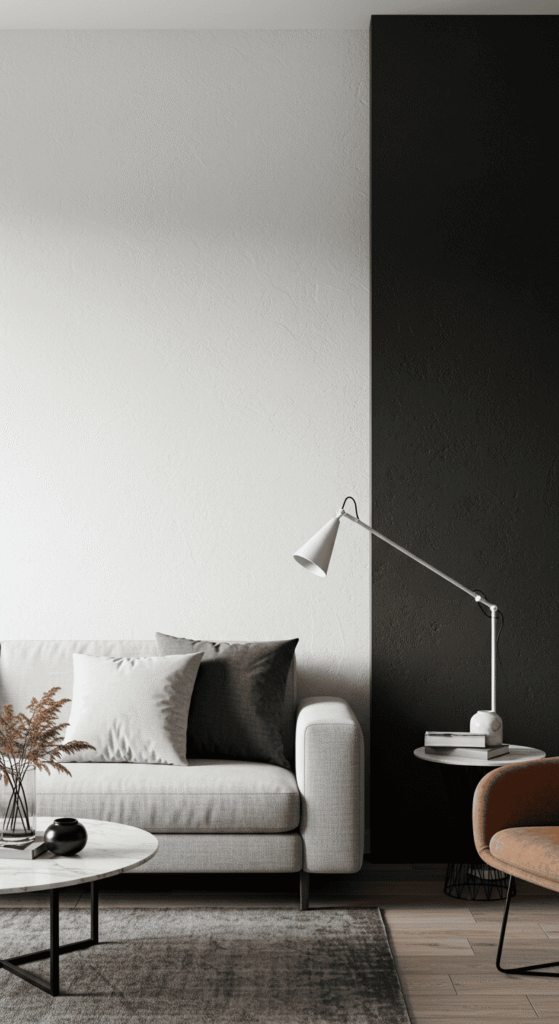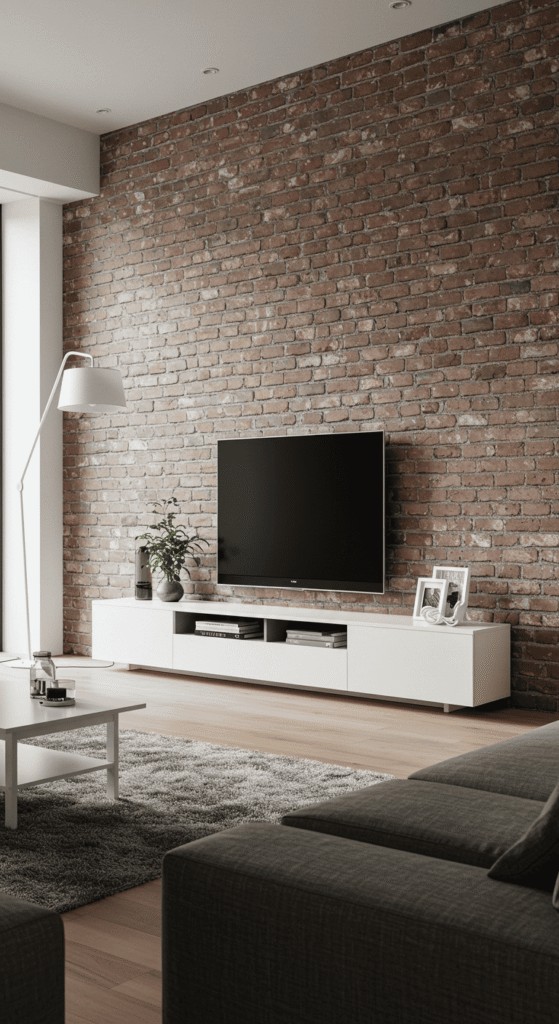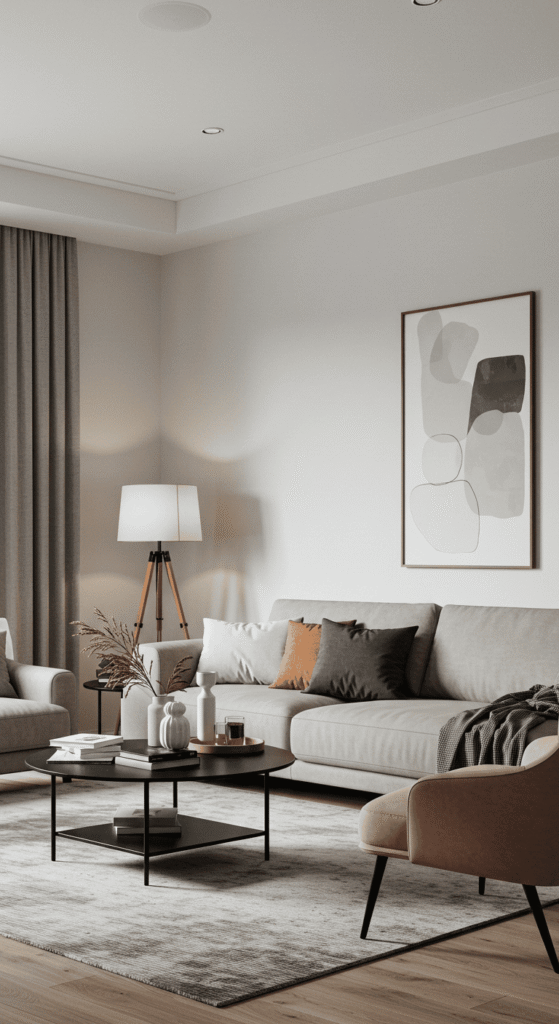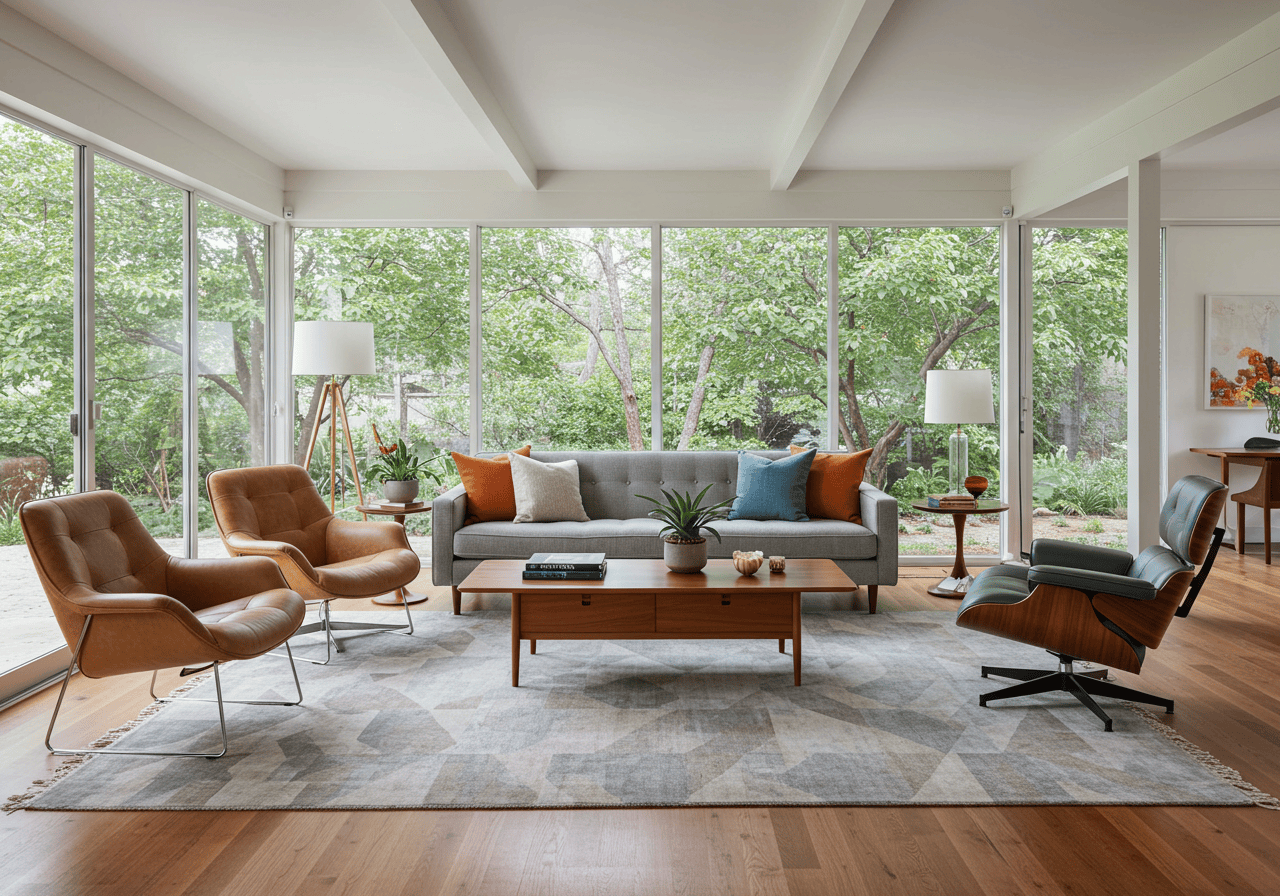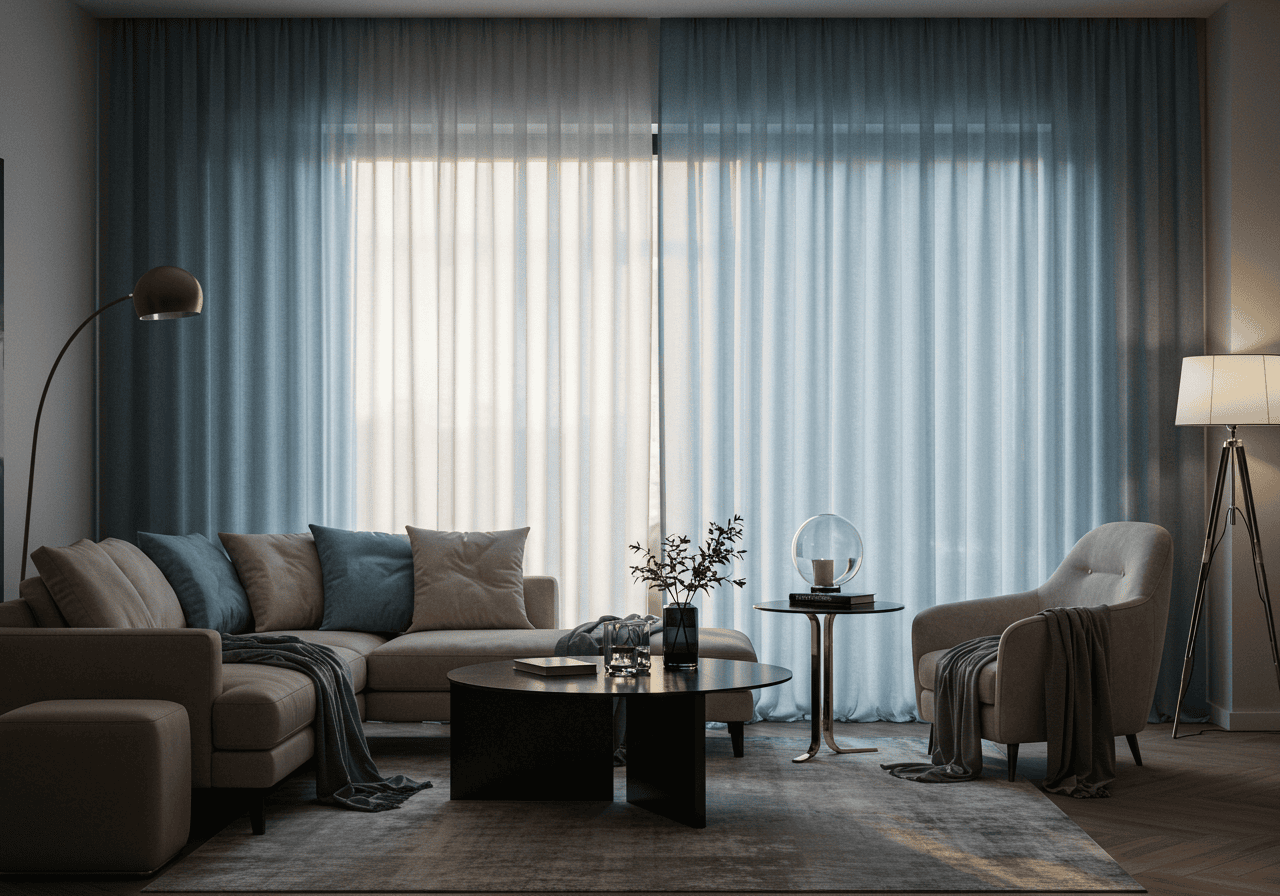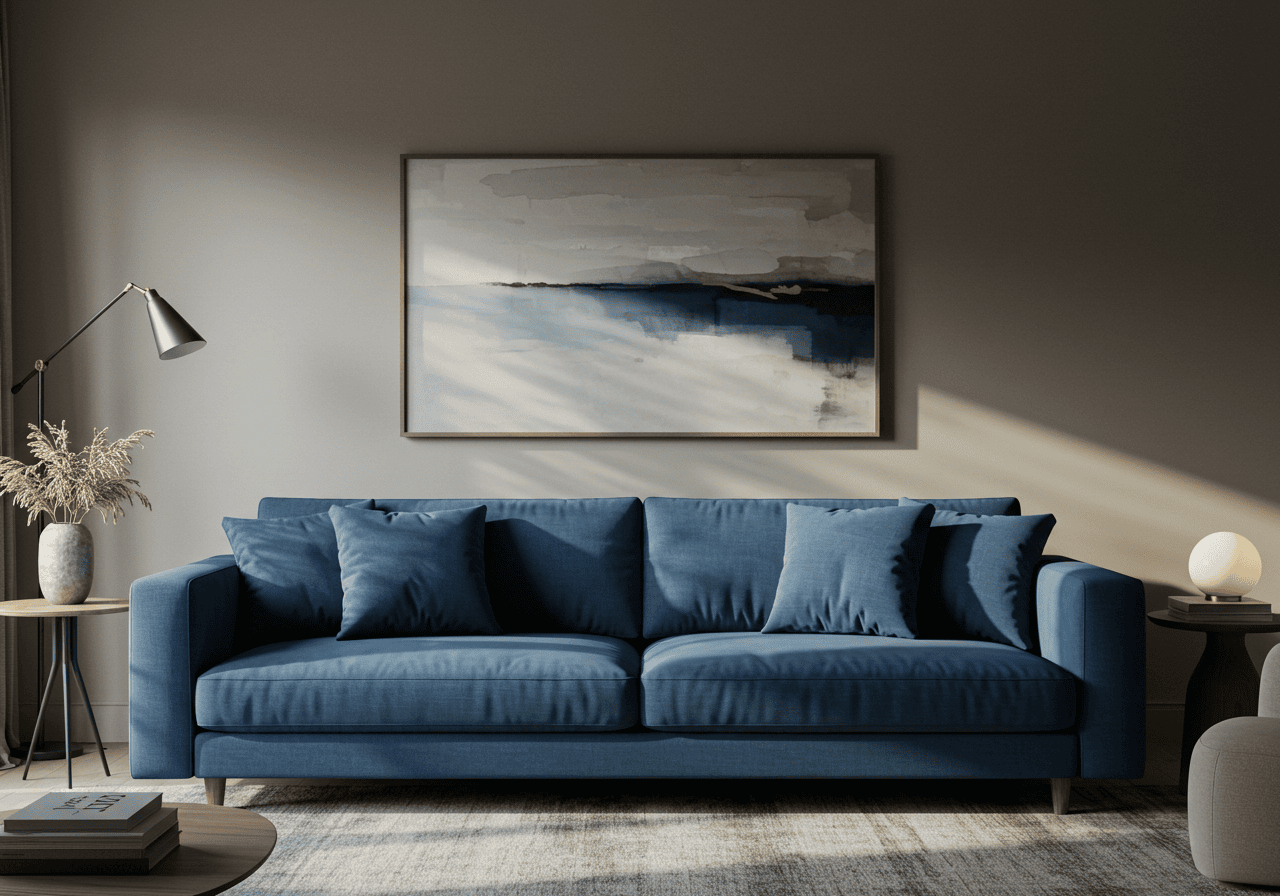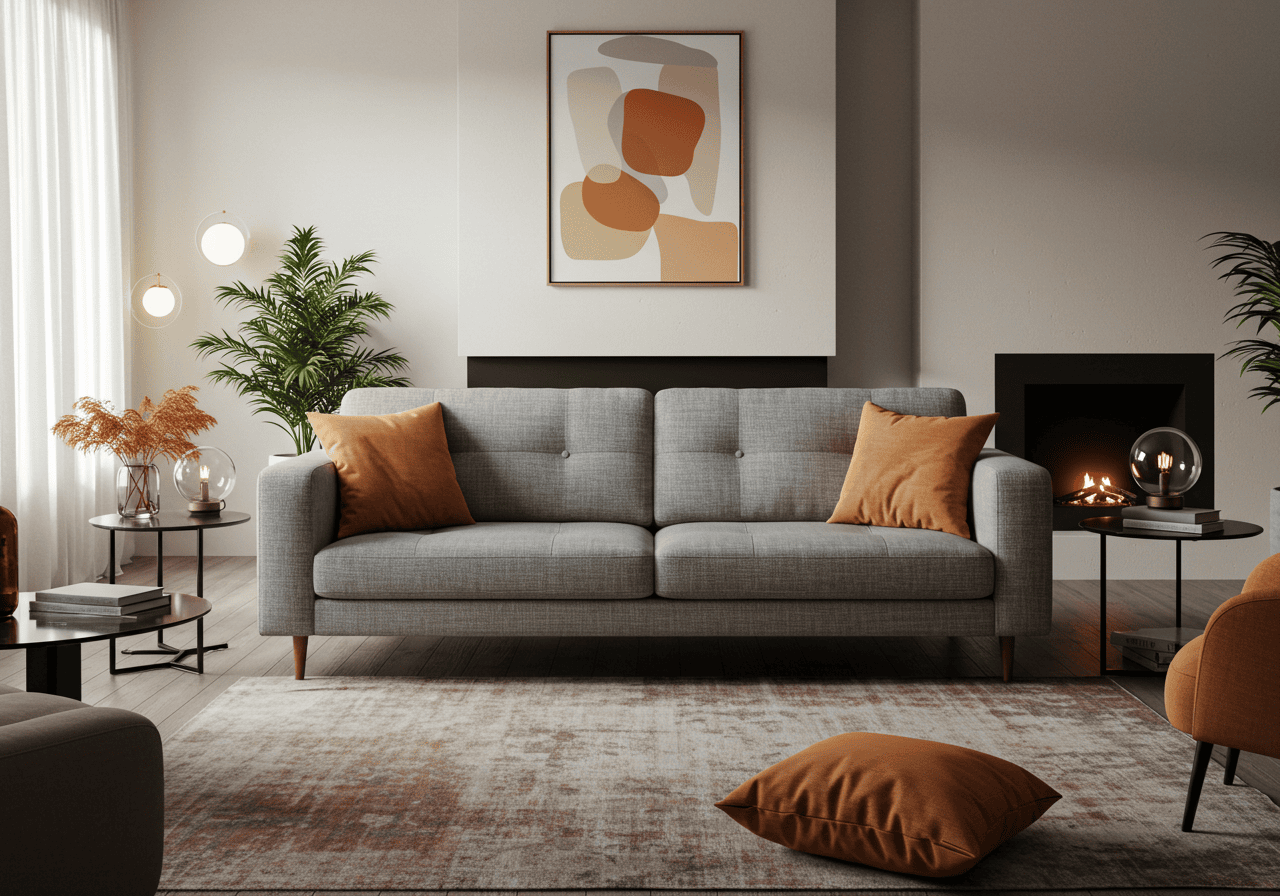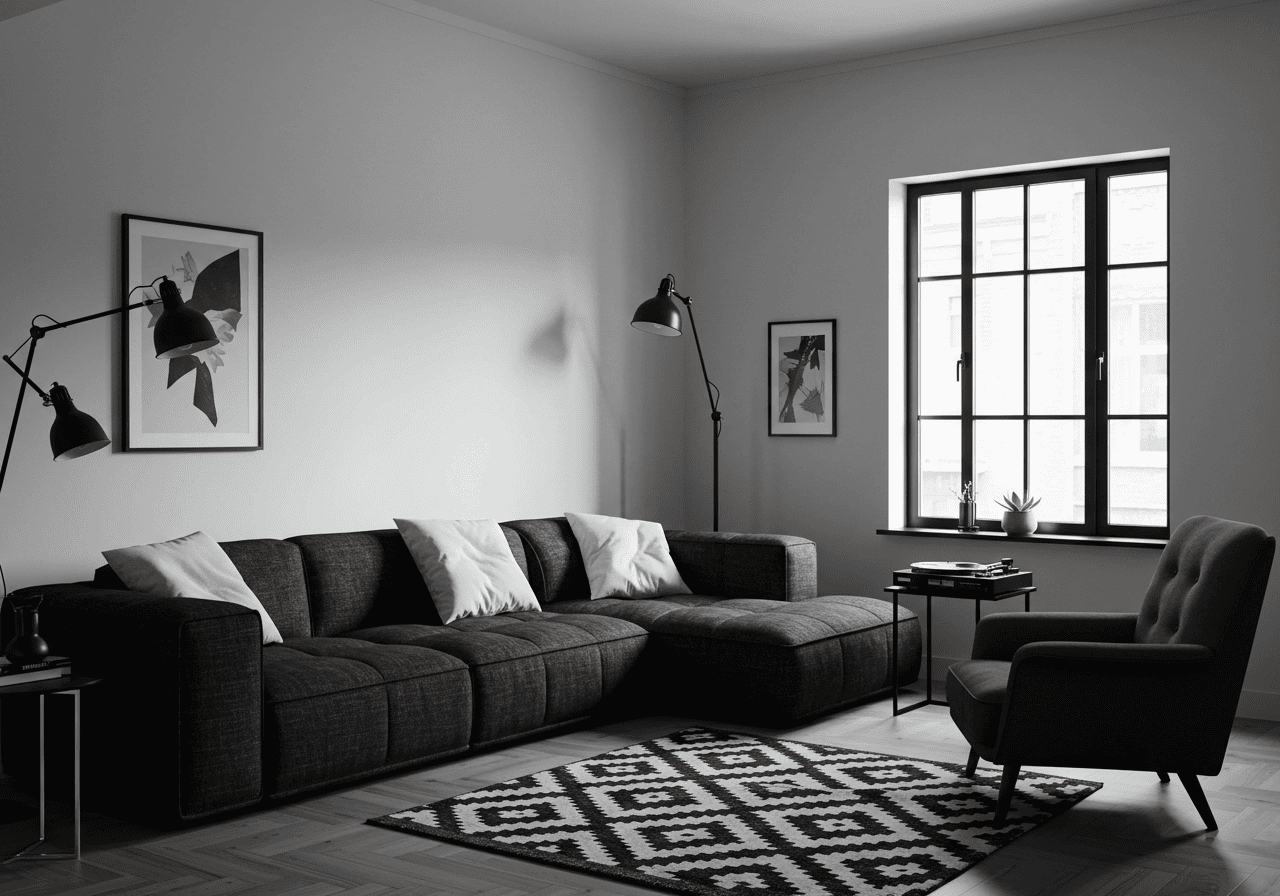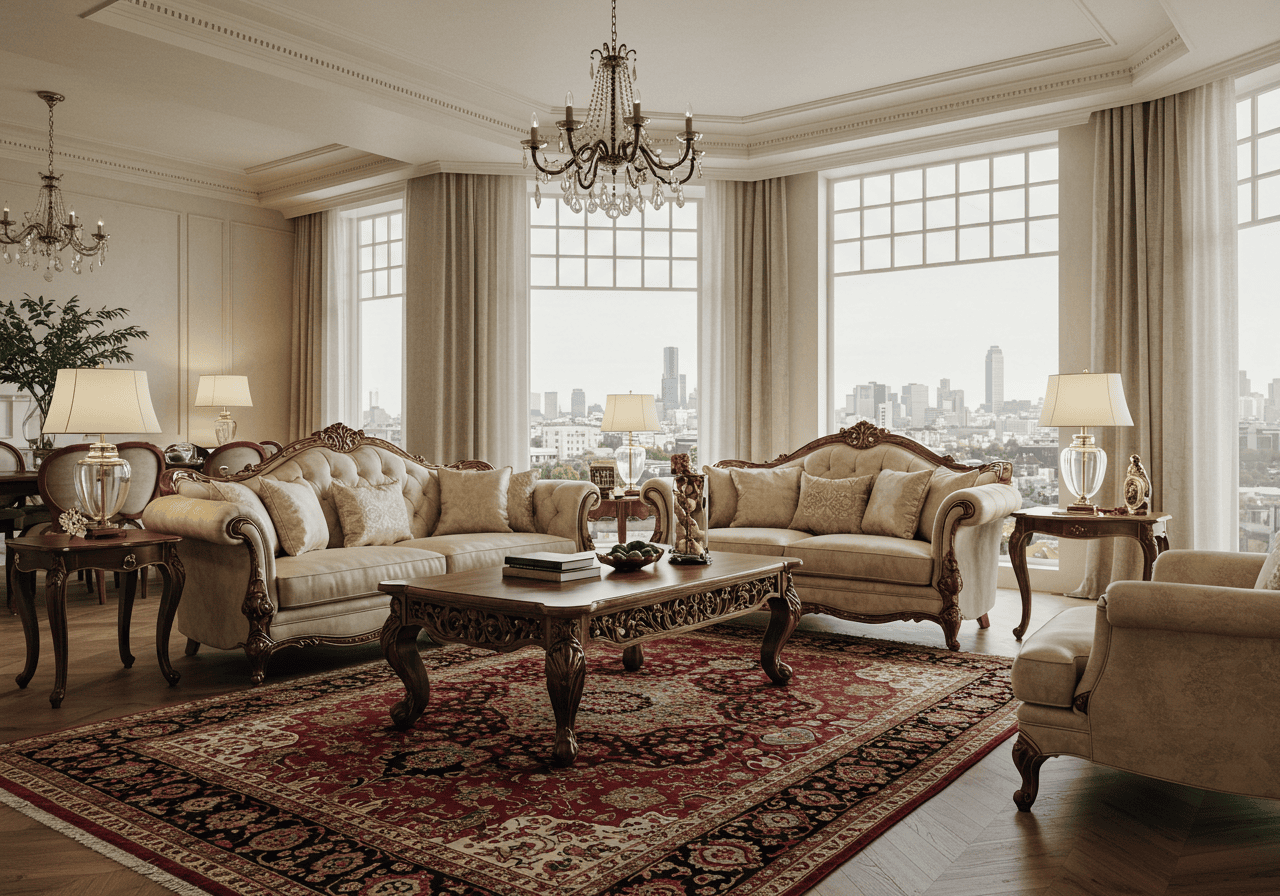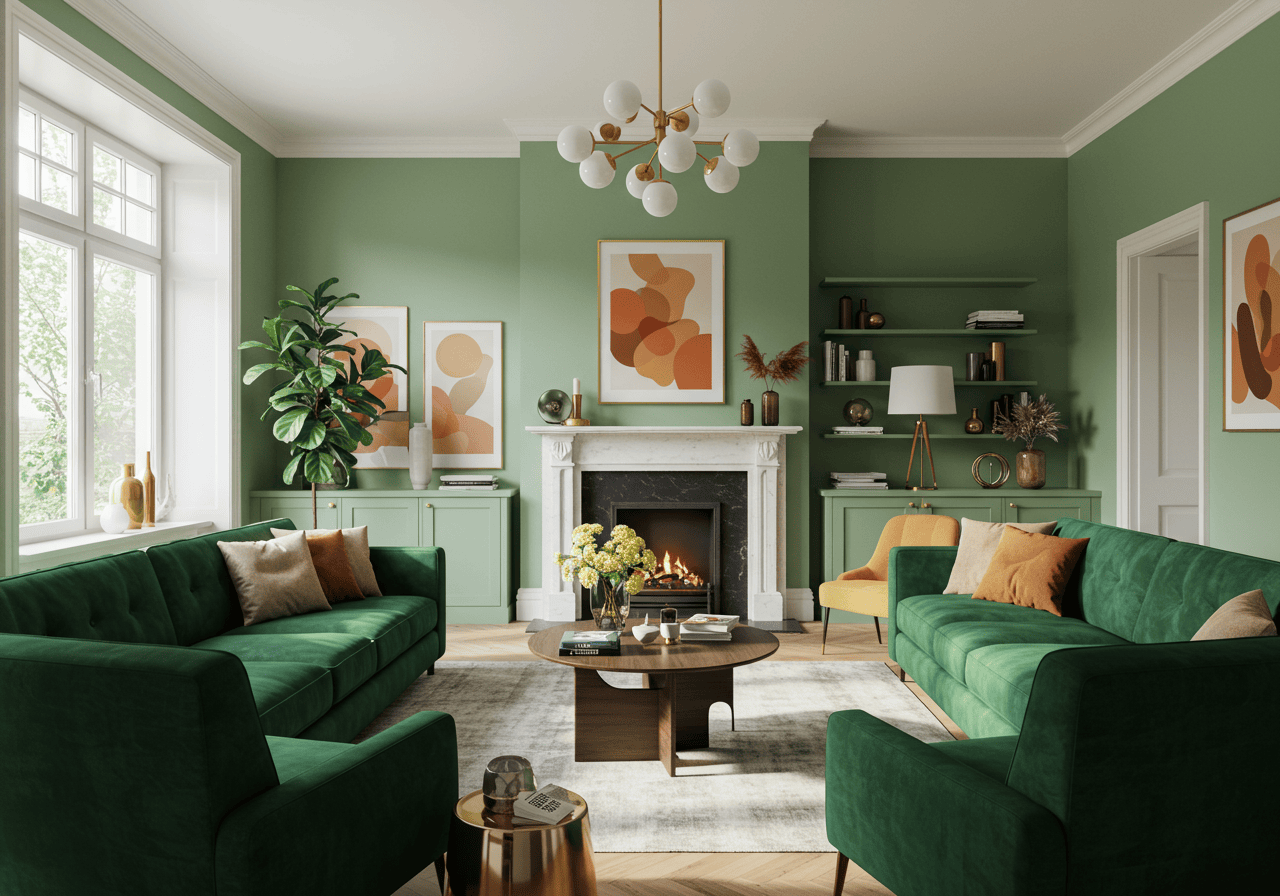Hey there, home decor lovers! Is your living room feeling a little… yesterday? Are you dreaming of a space that feels fresh, sophisticated, and perfectly now? You’ve come to the right place! Contemporary design is all about blending comfort with clean lines, embracing natural elements, and creating a space that feels both current and timelessly chic.
Forget stuffy or overly trendy – true contemporary style is welcoming, functional, and oh-so-stylish. It’s about creating a living room that reflects you while incorporating the best of modern aesthetics. Ready to get inspired? Let’s dive into some stunning contemporary living room ideas that are achievable, impactful, and guaranteed to make you fall in love with your home all over again.
1. The Power of Neutrals & Texture
Contemporary design often starts with a foundation of calming neutrals, but the secret to making it sing? Texture, texture, texture! Think beyond just color and focus on how surfaces feel. Layering different textures adds depth, warmth, and visual interest without overwhelming the space.
- How to nail it: Pair a sleek leather or smooth fabric sofa with nubby knit throws, a plush high-pile rug, woven baskets for storage, and perhaps a smooth, cool marble coffee table. Consider wall treatments like limewash or subtle textured wallpaper. Even different wood grains add tactile appeal.
- Expert Tip: Stick to a cohesive neutral palette (creams, beiges, greys, soft whites) and let the varied textures do the talking. A grey sofa is a fantastic versatile base for layering textures.
2. Sculptural Furniture Takes Center Stage
Move over, matchy-matchy sets! Contemporary living rooms often feature statement furniture pieces with unique, sculptural shapes. Think curved sofas, armchairs with interesting silhouettes, or coffee tables that double as works of art.
- Why it works: These pieces add personality and an artistic flair, breaking up the straight lines often associated with modernism. They act as focal points and conversation starters.
- Get Inspired: Look for sofas with soft, rounded edges, armchairs with cantilevered bases, or uniquely shaped accent tables. Don’t be afraid of asymmetry. While distinct, you can find inspiration in the iconic shapes often seen in Mid-Century Modern design.
3. Bold Minimalism: Less is More (But Make it Impactful)
Contemporary isn’t necessarily stark minimalism, but it does embrace the “less is more” philosophy. It’s about curated simplicity. Every item should have a purpose or bring significant aesthetic value. The “bold” part comes from making deliberate, impactful choices within that minimal framework.
- Achieve the Look: Declutter ruthlessly! Invest in high-quality pieces you truly love. Instead of many small knick-knacks, opt for one large-scale piece of abstract art or a single, stunning floor lamp. Strategic emptiness is key – let your chosen pieces breathe.
- Small Space Savvy: This approach is particularly effective for smaller living rooms, making them feel larger and more serene.
4. Embrace Natural Light & Biophilic Touches
Connecting with the outdoors is a hallmark of contemporary design. Maximize natural light and incorporate elements of nature – known as biophilic design – to create a calming and refreshing atmosphere.
- Let the Light In: Keep window treatments simple and airy. Sheer curtains or minimalist blinds allow light to flood the room. Consider positioning mirrors strategically to bounce light around. Explore beautiful curtain ideas that complement a contemporary feel.
- Bring Nature Indoors: Incorporate houseplants (both large floor plants and smaller potted ones), natural wood tones in furniture or flooring, stone accents (like a fireplace surround or tabletops), and nature-inspired artwork.
5. Strategic Pops of Bold Color
While neutrals form the contemporary base, don’t shy away from color entirely! The key is to use it strategically and intentionally. Think accent walls, a vibrant piece of furniture, bold artwork, or colorful textiles like cushions and throws.
- Making it Work: Choose one or two accent colors that complement your neutral scheme. This targeted approach prevents the space from feeling chaotic while adding personality and energy. A single brightly colored armchair, a dynamic rug, or even a collection of vibrant throw pillows can make a huge impact.
- Color Confidence: Not sure where to start? Draw inspiration from a piece of art you love or look to current color trends. For more ideas on weaving color into your space, check out these colorful living room ideas.
6. The Sleek & Minimalist Fireplace
Contemporary fireplaces move away from heavy mantels and ornate surrounds. Think linear designs, minimalist finishes, and seamless integration into the wall. They provide warmth and a focal point without visual clutter.
- Achieving the Look: Consider a long, horizontal gas fireplace insert, often placed lower on the wall than traditional ones. Finishes like smooth concrete, large-format tiles, or simple painted drywall keep it sleek. Some designs forgo a hearth entirely for an ultra-clean look.
- Design Tip: Extend the fireplace surround material (like tile or stone) all the way to the ceiling to create a dramatic vertical feature wall.
7. Monochromatic Schemes Beyond Neutrals
Take the neutral palette concept a step further with a sophisticated monochromatic scheme using varying tints, tones, and shades of a single color. Think deep forest greens, calming blues, or even rich terracottas.
- Making it Work: The key is variation within the chosen hue. Use lighter shades for walls, deeper tones for the sofa, and mid-tones for accents. Incorporate plenty of texture (as mentioned in point #1) to prevent flatness. A room exploring shades of blue could feature anything from navy to powder blue, adding depth and interest. A blue couch could be the perfect starting point for such a scheme.
- Expert Tip: Introduce small touches of a complementary neutral (like white, black, or wood) to ground the monochromatic look and provide visual relief.
8. Layered Lighting for Mood & Ambiance
Beyond a statement ceiling fixture, layered lighting is essential for creating a functional and inviting contemporary living room. This means incorporating multiple light sources at different levels: ambient (overall illumination), task (for specific activities like reading), and accent (to highlight features).
- Creating the Layers:
- Ambient: Recessed lighting, a central pendant, or flush mount fixtures.
- Task: Floor lamps beside armchairs, table lamps on side tables, or adjustable wall sconces.
- Accent: Picture lights illuminating artwork, uplighting behind plants, or LED strips under shelves.
- The Magic Ingredient: Dimmers! Installing dimmers on your main light sources allows you to easily adjust the mood from bright and functional to soft and cozy.
9. Geometric Patterns & Clean Lines
Contemporary design loves strong lines and geometric shapes. This can manifest in furniture silhouettes, rug patterns, artwork, or even architectural details. Think clean, crisp, and uncluttered forms.
- Incorporating Geometry: Look for sofas with straight arms, rectangular coffee tables, shelving units with clear grids, or rugs featuring bold geometric prints (like chevrons, triangles, or simple stripes). Even the layout of the room can emphasize clean lines.
- Balance is Key: While geometry is important, balance it with softer elements (like curved accessories or plush textiles) to prevent the space from feeling too rigid or cold. A striking black and white living room scheme often relies heavily on geometric contrast for impact.
10. Open Concept Living Integration
Many contemporary homes feature open-concept layouts, where the living room flows seamlessly into the dining area or kitchen. The design challenge is to create distinct zones while maintaining a cohesive overall look.
- Defining Zones: Use area rugs to anchor seating areas, position furniture strategically (like placing a sofa with its back to the dining space), and employ different (but complementary) lighting fixtures for each zone. Console tables placed behind sofas can also create a subtle visual separation.
- Maintaining Cohesion: Stick to a consistent color palette and style throughout the open space. Repeat materials or finishes (like the same wood tone or metal accent) across the different zones to tie everything together.
11. High-Tech Integration, Seamlessly Done
Contemporary living often embraces technology, but the key is seamless integration. Think hidden speakers, smart lighting controlled by voice or app, motorized blinds, and TVs that look like art when turned off.
- Conceal and Reveal: Opt for media consoles that hide wires and components. Consider recessed ceiling speakers or soundbars that blend aesthetically. Frame TVs (like Samsung’s “The Frame”) can minimize the black-box effect when not in use.
- Smart Home Style: Choose smart devices (thermostats, lighting controls) that have a sleek, minimalist design that complements your contemporary aesthetic. The focus is on convenience and function without visual clutter.
12. Focus on High-Quality, Sustainable Materials
Contemporary design increasingly values longevity, quality, and sustainability. This translates into choosing well-made furniture and materials that are durable and, where possible, environmentally conscious.
- Investment Pieces: Instead of fast furniture, consider investing in timeless pieces made from solid wood, natural stone, high-grade metals, or durable, quality fabrics. These items not only last longer but often look better with age.
- Eco-Conscious Choices: Look for furniture made from reclaimed wood, recycled materials, or sustainably harvested resources. Choose natural fiber rugs (wool, jute, sisal) and fabrics (linen, organic cotton). Low-VOC paints are also a smart choice for a healthier home environment.
13. Floating Elements for Airiness
Create a sense of lightness and space – key contemporary goals – by incorporating floating elements. Think wall-mounted shelves, vanities, or media consoles that don’t touch the floor.
- Why it Works: Lifting furniture off the floor creates visual breathing room, making the space feel larger and less cluttered. It enhances the clean lines favored in contemporary design and makes cleaning easier too!
- Implementation Ideas: Replace a bulky TV stand with a sleek floating console. Use floating shelves for displaying curated decor or books instead of a traditional bookcase. This is especially effective in smaller living areas.
14. Strategic Use of Mirrors
Mirrors are classic design tools, and in contemporary living rooms, they are used strategically to enhance light and create illusions of space. Forget ornate frames; think large, simple mirrors with minimal or sleek framing.
- Maximize Impact: Place a large mirror opposite a window to reflect natural light and the view, instantly brightening the room. A tall floor mirror leaning against a wall can make ceilings feel higher. Consider mirrored tabletops or accent furniture for a touch of glam.
- Style Tip: Choose mirror shapes that complement your design – a simple round mirror can soften angular furniture, while a large rectangular one reinforces clean lines.
15. Comfort Remains Paramount
While contemporary design emphasizes clean lines and curated style, it never sacrifices comfort. The living room is, after all, for living. Choose seating that is as comfortable and inviting as it is stylish.
- Finding the Balance: Look for sofas and armchairs with deep seats, plush cushions, and supportive structures, but maintain that contemporary edge with sleek legs, unfussy upholstery (like performance velvet, leather, or tight-weave fabrics), and refined silhouettes. Don’t be afraid of color here either – a comfy blue couch can be both a style statement and a cozy haven.
- Layer for Coziness: Add soft throws and comfortable cushions (even if they adhere to your color scheme and texture plan) to enhance the inviting feel.
16. Art as a Defining Statement
Art plays a crucial role in contemporary interiors, often serving as a major focal point and personality statement. Think large-scale pieces, bold abstracts, graphic prints, or curated gallery walls.
- Making an Impact: One large, commanding piece of art can define the entire room’s mood and color palette. Alternatively, a well-arranged gallery wall featuring a mix of prints, photos, and objects can add a personal touch.
- Choosing Your Style: Select art that resonates with you but also complements the room’s contemporary feel. Abstract art, black and white photography, or pieces with strong lines and colors often work well. Don’t hang it too high – the center of the piece should be roughly at eye level.
17. Softening the Edges with Curves
While contemporary design often celebrates straight lines, there’s a growing trend towards incorporating softer, curved shapes to balance the geometry and add a touch of organic flow and comfort. Think beyond just furniture – architectural details can play a role too.
- Where to Add Curves: Consider a round coffee table, a mirror with arched top, chairs with rounded backs, or even a plush, crescent-shaped sofa. Curved floor lamps or decorative objects can also introduce softer lines. If you’re renovating, consider arched doorways or niches.
- The Effect: Curves introduce a sense of gentle movement and can make a space feel more welcoming and less formal. They provide a beautiful contrast to the more typical linear elements of contemporary style.
18. Transparency for Visual Lightness: Glass & Acrylic
Enhance the sense of openness and light – core tenets of contemporary style – by incorporating transparent furniture pieces made from glass or acrylic. These materials take up minimal visual space, making rooms feel larger and airier.
- How it Works: A glass coffee table allows the pattern of your rug to show through and doesn’t block sightlines across the room. Acrylic (‘ghost’ style) chairs or console tables blend seamlessly into their surroundings, offering function without visual weight.
- Styling Tip: Pair transparent pieces with more solid elements (like a plush sofa or wooden side table) for balance. Keep surfaces clear to maximize the see-through effect and maintain a clean aesthetic.
19. Playful Contrasts: Texture, Tone, and Time
Create visual excitement and depth by intentionally playing with contrasts. This could be pairing rough textures with smooth surfaces, light tones with dark accents, or even modern pieces with a single, well-chosen antique.
- Examples of Contrast:
- Texture: A smooth leather sofa against a rough, exposed brick wall. A sleek metal lamp on a rustic wood side table.
- Tone: Dark charcoal walls with crisp white trim and light-colored furniture. Primarily neutral room with bold black accents in frames or lighting.
- Style/Time: A very modern, minimalist room featuring one ornate vintage mirror or a classic armchair reupholstered in a contemporary fabric.
- Why it Works: Contrast prevents monotony and draws attention to specific elements, making the design more dynamic and engaging.
20. Unexpected Material Pairings
Create tactile and visual intrigue by juxtaposing materials with contrasting properties. Think raw and refined, smooth and rough, natural and industrial.
- Creative Combos: Pair a polished concrete floor with a plush wool rug. Place a smooth marble coffee table next to a heavily textured boucle armchair. Combine warm, rustic wood beams with sleek metal light fixtures.
- The Impact: These unexpected combinations add layers of interest and sophistication, highlighting the unique qualities of each material and preventing the design from feeling one-note.
21. The Art of Thoughtful Negative Space
Perhaps one of the most defining, yet often overlooked, elements of contemporary design is the intentional use of negative space. This means consciously leaving some areas empty – walls, corners, surfaces – allowing the chosen elements to stand out and the room to breathe.
- Resist the Urge to Fill: Contemporary style isn’t about cramming every nook and cranny. It’s about curated choices having maximum impact. An empty corner can be just as powerful as a filled one if it contributes to the overall balance and calmness of the room.
- How it Enhances: Negative space draws attention to the shapes of your furniture, the texture of your walls, and the impact of your statement pieces. It creates a sense of calm, order, and sophistication, preventing the room from feeling visually overwhelming. Think of it as the quiet pauses in a beautiful piece of music.
Ready to Create Your Contemporary Haven?
And there you have it – 21 ways to infuse your living room with sophisticated, welcoming contemporary style! Remember, contemporary design isn’t about rigid rules; it’s a flexible approach that blends clean aesthetics with personal comfort. It’s about creating a space that feels current, yet timelessly chic – a reflection of your taste, curated for modern living.

